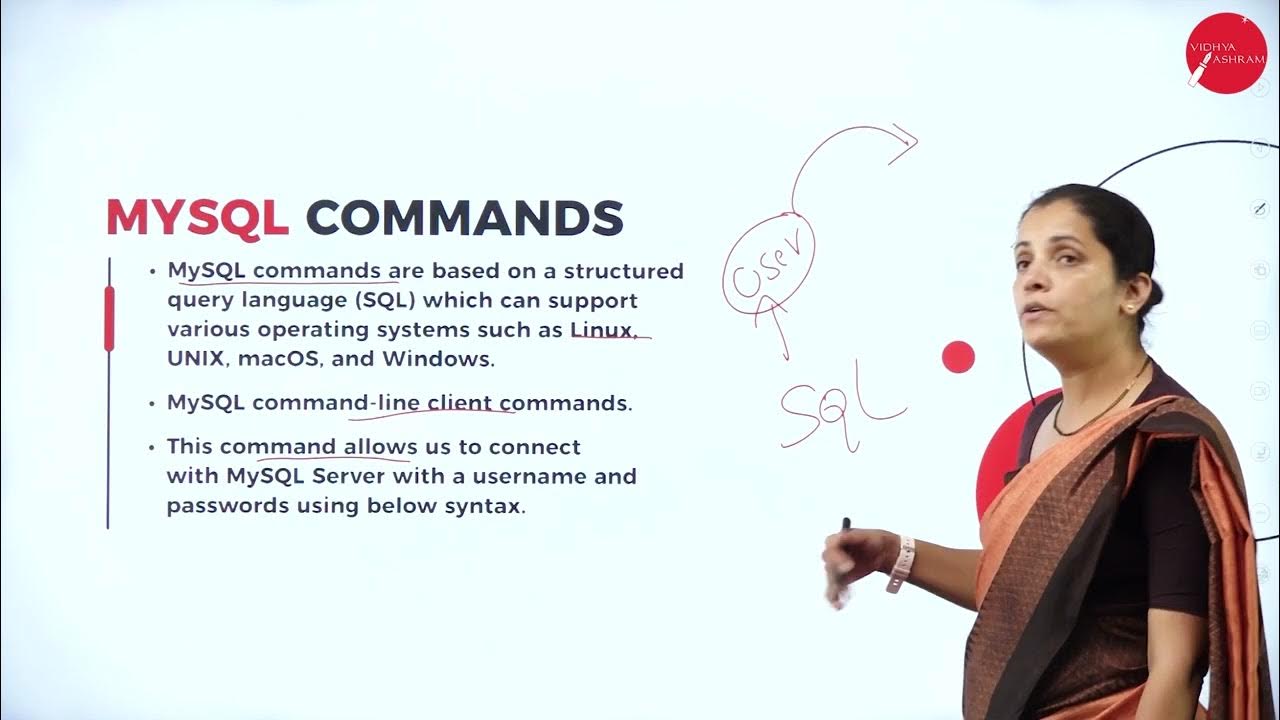What is a Database?
Summary
TLDRThis video script offers an insightful overview of databases, explaining their function as organized collections of information. It highlights the importance of data storage efficiency, consistency, and security, contrasting flat files with database systems. The script delves into various database architectures, emphasizing the benefits of three-tier architecture for security, scalability, and reliability. It also traces the evolution of databases from hierarchical to relational and NoSQL, concluding with the advent of cloud-based DBaaS, which allows for greater focus on data intelligence rather than database management.
Takeaways
- 📚 A database is an organized collection of information, essential for storing the vast amounts of data generated daily.
- 💾 Data is stored in tables within databases to facilitate efficient access and use for business intelligence and decision-making.
- 🔑 Databases offer advantages over flat files, such as Excel sheets, by improving efficiency, ensuring data consistency, and enhancing security.
- 🏢 Companies often use databases to manage and access data more effectively, avoiding the inefficiencies of sharing flat files.
- 🏭 There are different database architectures, including one-tier, two-tier, and three-tier, each with unique characteristics and benefits.
- 🛡️ Three-tier architecture is the most common due to its added security, scalability, reliability, and the ability to develop components independently.
- 🛠️ The evolution of databases has seen the transition from hierarchical to relational databases, and now to NoSQL and cloud databases.
- ☁️ Cloud databases, or DBaaS, offer a service where third parties manage the database, allowing DBAs to focus on higher-value tasks.
- 🚀 IBM has been a pioneer in the database world since its inception, creating the first database and continuing to innovate in the field.
- 🌐 The script emphasizes the importance of databases in extracting intelligence from data to benefit customers and drive business decisions.
- 📈 The speaker encourages viewers to engage with the content by liking, subscribing, and asking questions for further exploration of the topic.
Q & A
What is a database according to the script?
-A database is an organized collection of information that stores data efficiently for various uses.
Why is it important to store data efficiently?
-Efficient data storage allows for easy access to the most updated version of data, ensuring consistency and security, which are crucial for making informed decisions.
How does data commonly get organized in a database?
-Data is often organized into tables within a database, facilitating structured storage and retrieval.
What is the purpose of extracting business intelligence from databases?
-Business intelligence derived from databases is used to make decisions that benefit the customer and drive business growth.
Why might companies still be using flat files like Excel sheets for data storage?
-Some companies may still use flat files due to their simplicity and familiarity, but this method lacks efficiency and can lead to issues with data consistency and security.
What are the benefits of using a database over a flat file for data storage?
-Databases offer improved efficiency, easier access to data, consistency in data updates, and enhanced security compared to flat files.
Can you explain the concept of one-tier, two-tier, and three-tier database architectures?
-One-tier architecture involves a database and application on a single server. Two-tier separates the database and application but still on connected servers. Three-tier architecture adds a middle layer (server) between the database and application, enhancing security, scalability, and reliability.
Why is three-tier architecture the most common today?
-Three-tier architecture is prevalent due to its added benefits, such as enhanced security, scalability, reliability, and the ability to develop each tier independently, speeding up the development process.
What is the significance of the evolution of databases from the 1960s to now?
-The evolution of databases from hierarchical to relational and now to NoSQL and cloud databases reflects technological advancements and the growing complexity of data management needs.
What is a cloud database and how does it differ from traditional databases?
-A cloud database, or DBaaS (Database-as-a-Service), is a service where a third party manages the database, handling maintenance and security, allowing businesses to focus on data intelligence rather than database management.
How has IBM contributed to the development of databases?
-IBM has been a pioneer in the database world, creating the first database (IMS), pioneering relational databases with System R, and developing SQL for database interaction, as well as continuing to innovate in the field.
Outlines

This section is available to paid users only. Please upgrade to access this part.
Upgrade NowMindmap

This section is available to paid users only. Please upgrade to access this part.
Upgrade NowKeywords

This section is available to paid users only. Please upgrade to access this part.
Upgrade NowHighlights

This section is available to paid users only. Please upgrade to access this part.
Upgrade NowTranscripts

This section is available to paid users only. Please upgrade to access this part.
Upgrade NowBrowse More Related Video

What is Database & Database Management System DBMS | Intro to DBMS

DAY 10 | PHP AND MYSQL | VI SEM | B.CA | ACCESSING MYSQL | L1

Types of Databases: Relational vs. Columnar vs. Document vs. Graph vs. Vector vs. Key-value & more

¿Qué son las BASES DE DATOS? - La mejor explicación en español

Access: Introduction to Databases

L5 : Types of Database | Complete DBMS Course
5.0 / 5 (0 votes)